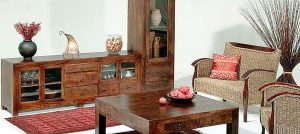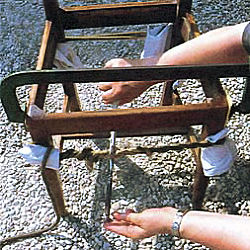Useful Tips
 Two-component varnishes, or cold cured varnishes, as well as waterborne varnishes, have two big advantages over polyurethane varnishes: they dry faster and do not have time to become dusty; the varnished surface remains light and does not turn yellow over time. Cellulose lacquer also gives a light coating, although not as durable as when finishing with the above varnishes.
Two-component varnishes, or cold cured varnishes, as well as waterborne varnishes, have two big advantages over polyurethane varnishes: they dry faster and do not have time to become dusty; the varnished surface remains light and does not turn yellow over time. Cellulose lacquer also gives a light coating, although not as durable as when finishing with the above varnishes.
You can get rid of the bubbles as follows: pour the varnish from the can into a new bucket for paint or a special bucket for varnish. Lower the brush, then press it to the side – this will remove air from the bristles, which can give small bubbles on the freshly varnished surface. After closing the can of varnish, turn it upside down for half an hour, and then store it in its normal position: this will seal the lid and prevent the formation of a crust on the surface of the varnish. To apply a thin first coat of varnish on a wooden surface, use a clean, lint-free cloth and, pressing it well, rub the primer into the wood. This cannot be done with a brush.
A two-component varnish will not harden if it reacts with the material of the container in which it is mixed, so take a glass jar and not a metal or plastic one. To prevent the brush from collecting dust from the floor or work surface, place foil tins or plastic can lids under the furniture legs before applying the varnish. Do not shake the can of varnish: the resulting air bubbles will spoil the polish. Instead, gently mix the contents with a clean bar. Waterborne varnish causes the fibers to swell – the surface of the wood becomes rough. There are two ways to handle this. You can either moisten the wooden surface prepared for varnishing with water, so that the fibers expand, and then clean it with a sandpaper and varnish, or put the first coat of varnish and grind the fibers.
Care for wooden furniture
Wooden furniture requires special care: they buy it for a long time, and therefore you need to constantly protect it from dust, scratches, insect pests. Here are some tips that can help you maintain the pristine appearance of your furniture: To wipe off dust from furniture covered with varnish, you need to use only soft materials: flannel, cloth, velvet. Do not wipe the dust with a damp cloth, otherwise the coating will become cloudy and will not shine. If you need to remove dried spots, use cleaning creams and sprays that do not contain abrasive particles.
After cleaning, the lacquered surfaces must be polished with a dry flannel cloth. Cleaning agents, which include chemically active substances (caustic alkali, acid), can be used only if the stain is not removed in a different way. But keep in mind that their use will harm the surface. If traces of hot objects remain on the surface of the furniture, they can be removed using an oil-alcohol solution prepared in a one to one ratio. The mixture of vegetable oil and alcohol is rubbed with a soft cloth on the stain until it disappears completely. Paraffin mixed with wax can also help you: treat it with a stain and iron it through blotting paper with a warm iron.
Greasy fingerprints are easily removed with talcum powder. Put some talcum powder on a napkin and rub the stain. Just do not overdo it so that there are no scuffs left. Furniture made from valuable tree species to maintain a stable color is recommended to be wiped with a mixture of equal proportions of vinegar and turpentine (vinegar can be replaced with wax or burdock oil). If you scratched wooden furniture, this can be fixed. A weak iodine solution will help paint over the scratches on mahogany, walnut, or oak furniture. In order to paint scratches on furniture made of precious wood, various self-prepared solutions are also used.
A mixture of olive oil and red wine also adapts to the nut. A universal remedy is beeswax, which is suitable for all tree species. Another scourge of wooden furniture is a wood bug. Its presence is given out by small openings-passages on the surface of furniture, from which yellowish crumb is strewed. Currently, there are many compounds for the destruction of these insects. However, if there is nothing at hand, and you want to save the furniture right now – spray it with a mixture of turpentine and kerosene (3: 1), gasoline and naphthalene, or liquid paraffin. Furniture will have to be processed two to three times, with an interval of three weeks. This is done in order to kill all the bugs, including those that appear from the larvae.




